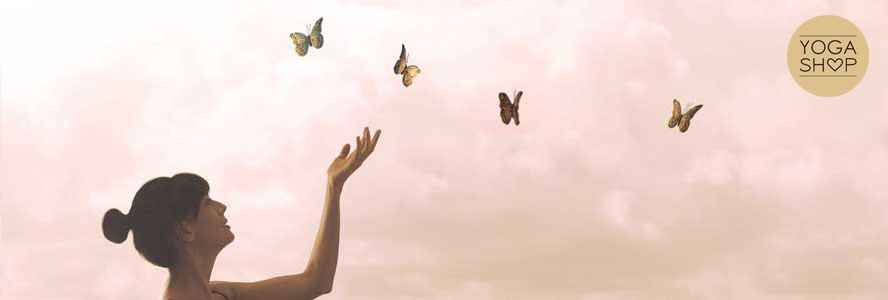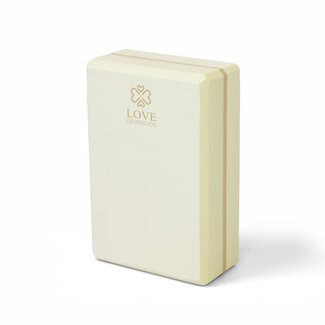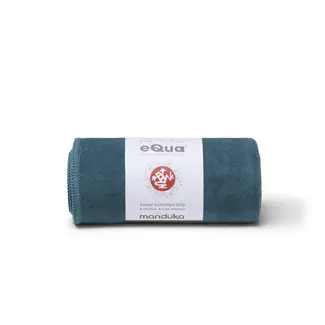What is Mindfulness? And where can you learn this?
Mindfulness is an exercise that helps against worry and stress. The advantage is that you enjoy yourself more and feel better about yourself. More relaxed, less worried and less concerned with reaching highs and avoiding lows.
The reasons for delving into mindfulness are numerous: it trains your attention to the here and now, you see thoughts and feelings come and go without getting caught up in them, you learn to take life as it is. With great effects, both physically and emotionally.
In this blog we take you into the world of mindfulness, and you will also find several mindfulness exercises that you can apply immediately.
Jump directly to:
What is mindfulness?
Being mindful means being fully aware of what you are experiencing in the present moment. You can translate 'mindfulness' as 'attentive' or 'observant'. By practicing this you reduce worrying and stress. The advantage is that you enjoy what you do more and feel better about yourself.
Somehow you have an idea of what mindfulness means, at least doing something with attention, right? What you want to achieve with mindfulness is: intentionally being present with open attention to what is happening now. By being mindful you learn to view people, situations and your own feelings that come your way with gentle eyes.
That gentle look is healing - as numerous scientific studies have shown - both for your own internal processes and for your relationships with others.

A mindfulness exercise with that soft look
To give you an immediate taste of mindfulness - and not just read about it - you can do this exercise now, it only takes two minutes.
Short mindfulness exercise
- Sit relaxed. Become aware of your breathing and slowly look around you without focusing on anything in particular. See where you are.
- Then choose to rest your eyes on something and look at it with soft eyes, while also keeping your gaze a little open to the rest of the environment. Your eyes are kind, they are soft and your gaze is open and non-judgmental.
- If you notice that your view wants to narrow, no problem, just open it again by trying less hard and going back to your breathing for a moment and then start looking again.
(TIP) It is nice to do this exercise cross-legged, on a meditation pillow. View our collection here to see if your color meditation cushion is included.
Explanation gentle eyes
Looking with gentle eyes is looking with a friendly open look, with love for what you observe and also with a look where there is room for wonder. You will first notice the difference between concentrated viewing or focusing in your body. Tension behind and around your eyes, eyebrows and forehead.
How are you feeling at the moment? Are your jaws relaxed? Is your brow furrowed? What happens when you smile?
Where does mindfulness come from?
The concept of mindfulness is a Western invention. Previously we only talked about meditation, but this was known (especially then) as vague. When scientists wanted to do research into this, they were not taken seriously. But because they wanted to research the benefits, they took the most important components of meditation and summarized them under the concept of mindfulness. This also includes breathing exercises, for example. As a result, mindfulness suddenly became concrete and practical and the Western world now found it interesting, especially as a remedy against stress.
What does mindfulness do?
What mindfulness does is develop an attitude to life that helps you stay with your experience in the now in a new way. Whatever it is. When you worry about the future, it brings you to the relatively safe here and now.
With pain you experience that resisting it makes it worse and staying with it actually reduces the pain. By becoming more attentive, you will see through ingrained patterns in your work or relationships and you can consciously take action instead of reacting automatically. Not to just accept everything that happens to you... but to see from a broader perspective what is now and what is needed and to act accordingly.
For me, this definition of mindfulness gets to the essence best:
“Mindfulness is stopping (stopping)
To be present in this reality with mild, open attention (watch)
So that you can deal with it with more freedom (act).”
Edel Maex (psychiatrist, Zen teacher and author)
Why mindfulness is a superpower
Don't have the time or desire to read the rest of this blog but still want a sense of what mindfulness means and can do for you? Then watch this comical animated video that succinctly explains the power of mindfulness.
Why is mindfulness good for you?
Mindfulness has become extremely popular over the past twenty years, both in the mainstream media and in the psychotherapy literature. In these twenty years, the concept of mindfulness has changed from a largely obscure Buddhist concept developed about 2,600 years ago to a mainstream method.
These are the main benefits of mindfulness:
- More self-control
- Being able to assess objectively
- Greater tolerance
- Improved flexibility
- Equanimity
- Improved concentration
- Mental clarity
- Emotional intelligence
This increases your ability to deal with others and yourself with kindness, acceptance and compassion.
This article brings together several scientific studies into the benefits of mindfulness.
Is mindfulness the key to your happiness?
If you get started with mindfulness you will notice that it is not the answer to everything. It does not make all your problems disappear like snow in the sun. It is a powerful practice, and it brings a beautiful awareness into your life. But sometimes it takes awareness of all the difficult emotions you feel, all the undermining things you think about yourself or your future. Consciousness does not automatically make you feel good all the time.
What else is needed?
Mindfulness is only part of the job. What is also needed is compassion, for yourself and others. It requires vulnerability and the willingness to open your heart. It requires honesty and the willingness to look at everything. It requires the willingness to accept life as it is, without the urge to control it.
It requires your willingness to let go of your beliefs about how it should be. The work is also to be curious, open, and to embrace not knowing. And that takes courage!

4 simple mindfulness exercises to be more attentive
Now that we know what it means to be mindful and the benefits of mindfulness, the hard part is reminding yourself to be more mindful. And once you remember, you're not likely to do it 24/7. But with the simple exercises below you can add a dose of mindfulness to your life.
- Enjoy your morning tea or coffee
Try to take at least a minute in the morning to appreciate the smell, warmth and taste of your hot drink. So don't read your email while emptying your cup.
- Eat without distractions
Did you know that you have to let a piece of dark chocolate melt on your tongue to really taste all the flavors? Dark chocolate is the perfect food to make you more aware.
- Take regular walks
Something that many have done over the past year and have also experienced that it works. Go for a walk and listen to the birds singing, look up at the clouds and be content with the way things are.
- Take a bath
It's one of the best ways to get away from everything and focus on the present moment; the warmth of the water, the peace, the lack of distractions. Place a scented candle on the edge of your bath and let the scent penetrate your consciousness. And if you're not a bath person, a shower is one of the most underrated moments to be mindful.
“The best way to capture moments is to pay attention. This is how we cultivate mindfulness. Mindfulness means being awake. It means knowing what you are doing. “
Jon Kabat-Zinn
Start with mindfulness
If you are interested in doing 'something' with mindfulness, you can do so in different ways with varying degrees of intensity; via a book, an app, a training, a workshop, online, yoga, or just apply the simple exercises you can find in this blog.
See below what suits you best at the moment.
Books about mindfulness
I pick three books from the enormous mountain of literature that has been published on this subject.
- Thich Nhat Hanh, Mindfulness for a happier life. The well-known spiritual leader and Zen master describes the importance of a more attentive life in the book and it is peppered with practical examples. You will find many practically applicable meditations and exercises that have been developed over the past 60 years with the help of his meditation community.
- Live In The Moment, written by Ernst Bohlmeijer, is suitable for anyone who experiences life as unsatisfactory or has difficulty accepting everyday life. It is an inspiring and accessible book, with a CD with pleasant mindfulness exercises.
- Mindfulness, the title is not that original, but the content of Mark Williams' book is inspiring. Problems and symptoms are highlighted and practical solutions are then given. The book also includes an 8-week exercise program.
Apps with mindfulness exercises
A mindfulness app is a convenient, accessible way to incorporate mindfulness into your daily life. With guided meditations, flexible practice options, and varied tools, it allows you to explore techniques like breathing exercises, body scans, and sleep-focused routines at your own pace. Features like progress tracking and personalized reminders help you stay consistent, while stress management tools offer relief during challenging moments.
Below you will find some (free) mindfulness apps:
Mindfulness Based Stress Reduction (MBSR)
If you really want to immerse yourself, learn what mindfulness means and how to implement it in your life - permanently - you can take a training course. There is a mindfulness training that was developed by Jon Kabat-Zinn and is given worldwide. This training is also called MBSR.
It is an 8-week training with weekly meetings. The last meeting is a full day and is spent in silence. As homework you will meditate for 45 minutes every day. You will learn the following five meditations: body scan, walking with attention, sitting with attention, a yoga series with simple standing exercises and a yoga series with simple sitting and lying exercises.

Mindfulness course or online mindfulness
If you are looking for a course, or if you see that a mindfulness course is offered somewhere, this is often the above training, but online. It requires a little more independence than the training. You often receive personal guidance from a trainer by Zoom or email.
Mindfulness yoga
This form of yoga is a gentle form of yoga that can help you in your daily life to deal more consciously with yourself and the impressions of everyday life. By mindfully performing mild physical exercises (including Yin Yoga), meditations and breathing exercises, a process of inner slowing down will automatically start.
You develop a soft, friendly attitude (hey, where have we read that before) so that you learn to stay close to the experience of the moment, without judgment. Without feeding or rejecting a thought. Mindfulness yoga can also be very suitable if you have followed a mindfulness training or course and would like to learn to integrate this further into your daily life.
Mindfulness exercises
How do you ensure that you really live life mindfully? We will take you through a number of exercises (three to be precise) for every moment of the day.
Whether you are sitting in the office, driving in the car, standing like a sardine on the tram or quietly at home... you can practice mindfulness anywhere.
Here you can download the 3 mindfulness exercises, so that you always have them at hand.
Mindfulness is training
Don't expect to be completely present in the moment during these exercises. You're bound to wander off and think. But realize this and come back every time. Realizing this and returning to the present is mindfulness. Whether this happens 10 times or 100 times, there is no such thing as failure.
You will notice that the more often you do these exercises, the easier it becomes to live in the now. And even then, you will have days when things are going well and days when you constantly have to pull yourself out of your thoughts and that is completely okay.
Further reading: Your breathing is an important tool in awareness exercises. In this post you will be introduced to different forms of yoga breathing. Here you can read 6 exercises for at home, at work and on the road.










